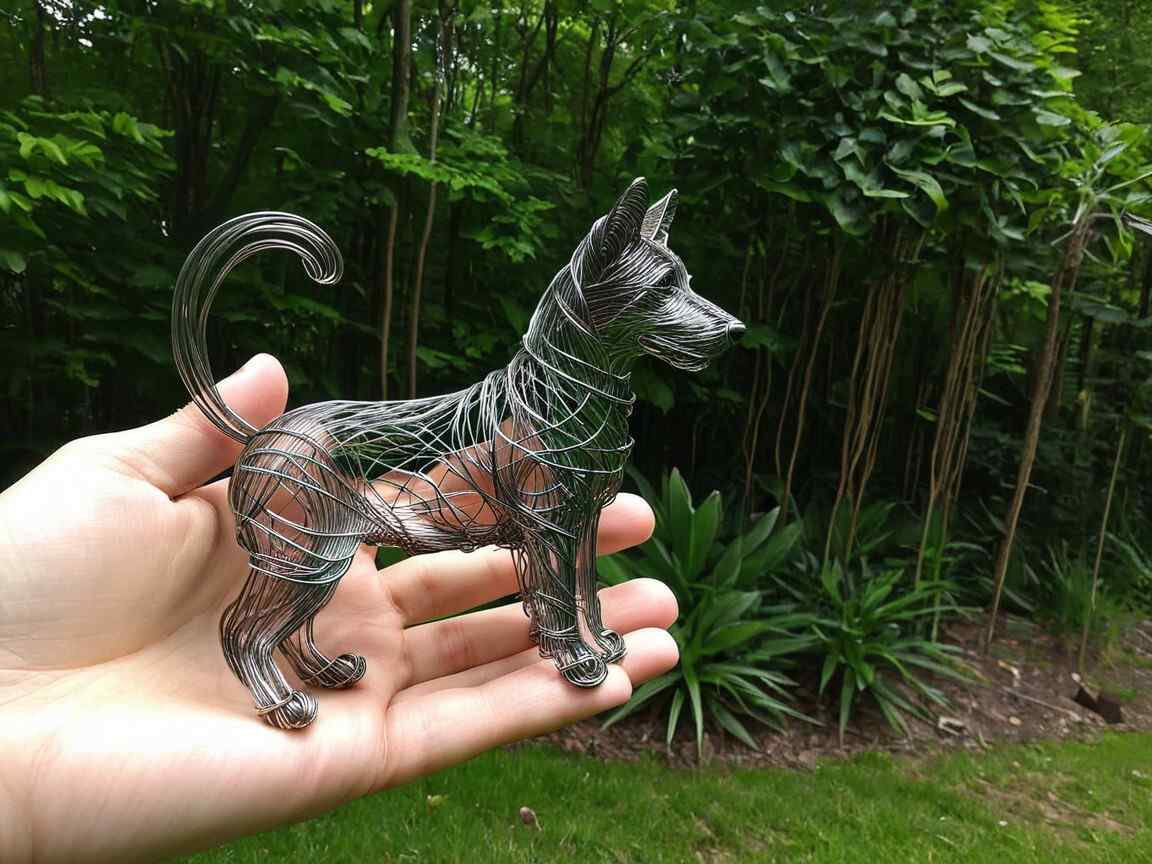Wire Art: The Ultimate Guide!

1. Introduction to Wire Art
Wire art is a creative form of artistic expression where metal wires are manipulated into sculptures, jewelry, wall art, or functional decor. This art form can range from simple, minimalist designs to complex, detailed pieces. It allows artists to create three-dimensional and two-dimensional pieces using bending, twisting, weaving, or wrapping techniques.
Wire art is widely appreciated for its versatility, affordability, and unique aesthetic appeal. It is often used in sculptures, jewelry making, home decor, and even industrial designs.
2. History of Wire Art
Wire has been used for artistic and practical purposes for thousands of years. Here’s a look at its evolution:
- Ancient Times: Early civilizations like the Egyptians and Mesopotamians used wire to make jewelry and decorative items.
- Medieval Period: Wire was used for chainmail armor, and later for delicate filigree jewelry in European and Middle Eastern cultures.
- 19th Century: Wire-based crafts became popular for home decor and functional art.
- 20th Century & Modern Era: Artists like Alexander Calder revolutionized wire art by introducing kinetic sculptures and mobiles, making it a respected artistic discipline.
Today, wire art is a well-established form of contemporary and fine art.
3. Types of Wire Art
Wire art can be categorized into different styles, depending on its function and artistic approach:
A. Wire Sculptures
Three-dimensional wire figures or abstract designs made by bending and shaping wire. Some artists create highly realistic sculptures, while others focus on abstract or minimalist designs.
B. Wire Drawings
A unique style where wire is used like a pencil, forming continuous line drawings that mimic sketches in mid-air.
C. Wire Jewelry
One of the most popular forms of wire art, including rings, necklaces, bracelets, and earrings. Techniques include wire wrapping, wire weaving, and soldering.
D. Functional Wire Art
Wire is also used in creating functional yet artistic objects like lampshades, wall hooks, baskets, and furniture.
E. Mixed Media Wire Art
Wire is combined with materials like beads, glass, fabric, or wood to create visually interesting artworks.
4. Materials Used in Wire Art
Different types of wire have distinct properties that influence the final artwork.
A. Types of Wire
- Copper Wire – Malleable and easy to shape, commonly used in jewelry and sculptures.
- Aluminum Wire – Lightweight, corrosion-resistant, and perfect for larger sculptures.
- Steel Wire – Strong and durable, used for structural artworks.
- Brass Wire – Has a warm golden tone, making it ideal for decorative art.
- Silver and Gold Wire – Precious metals used in fine jewelry.
- Recycled Wire – Upcycled from scrap materials to create eco-friendly artworks.
B. Tools Needed for Wire Art
To manipulate wire effectively, artists use:
- Pliers (round-nose, flat-nose, needle-nose)
- Wire cutters
- Hammers (for texturing or flattening)
- Mandrels (for shaping rings or coils)
- Files (for smoothing sharp edges)
- Soldering kits (for fusing metal pieces)
5. Wire Art Techniques
Different techniques help artists shape and manipulate wire to create stunning designs.
A. Wire Wrapping
Thinner wires wrap around a base wire to secure beads or gemstones.
Commonly used in jewelry-making for decorative and functional designs.
B. Twisting & Bending
Creates spirals, loops, and curves for artistic effects.
Useful for making intricate wire patterns and flexible designs.
C. Wire Weaving
Interlacing thin wires over a thicker frame to form patterns.
Adds texture and complexity, especially in jewelry and sculptures.
D. Soldering & Welding
Fuses metal wire pieces together using heat.
Ideal for making permanent connections in metal art.
E. Hammering & Texturing
Flattens, strengthens, or roughens wire for unique effects.
Used to create decorative finishes and adjust wire hardness.
F. Coiling & Looping
Forms decorative shapes, often seen in wire jewelry.
Used for embellishments, wire-wrapped beads, and spirals.
G. Freehand Wire Sculpting
Wire is bent directly by hand to create artistic shapes.
Allows for expressive, organic, and spontaneous wire art.
6. Famous Wire Artists
Many artists have gained recognition for their exceptional work in wire art:
A. Alexander Calder (1898-1976)
- One of the pioneers of wire sculpture and kinetic art.
- Famous for his “drawings in space” and mobiles.
B. Ruth Asawa (1926-2013)
- Known for her intricate, looped-wire sculptures that appear like floating clouds.
C. Gavin Worth
- Contemporary artist famous for his elegant, minimalist wire portraits.
D. David Oliveira
- Creates wire sculptures that resemble 3D pencil sketches.
7. Why Wire Art is Popular
Wire art is gaining popularity for many reasons:
✔ Affordable & Accessible – Requires minimal materials.
✔ Highly Versatile – Can be adapted for jewelry, sculptures, or home decor.
✔ Eco-Friendly – Many artists use recycled wires.
✔ Lightweight & Durable – Great for both indoor and outdoor display.
✔ Unique Aesthetic – Creates visually stunning and intricate designs.
Amazons Azr100x – Unleash The Future Of Entertainment And Learning!
8. How to Get Started with Wire Art
If you’re a beginner, follow these steps:
A. Gather Materials
- Choose a wire type (copper for beginners).
- Get essential tools (pliers, cutters, hammers).
B. Learn Basic Techniques
- Start with simple bends, loops, and twists.
- Try wire wrapping and coiling.
C. Practice with Small Projects
- Make wire rings, basic shapes, or simple sculptures.
D. Experiment with Designs
- Move on to more complex structures or add beads.
E. Take Classes or Follow Tutorials
- Online courses and workshops can help refine your skills.
9. Advanced Wire Art Techniques
Once comfortable with basics, explore advanced methods:
- Creating Life-Sized Sculptures
- Building Kinetic (Moving) Wire Art
- Combining Wire with Resin or Glass
- Engraving or Etching Metal Wire
- Using 3D Wire Frames for Installations
FAQs:
1. What is Wire Art Called?
Wire art is also known as wire sculpture, wire crafting, or wire drawing.
It includes wire jewelry, wire figures, kinetic wire art, and wire weaving.
2. What Do I Need for Wire Art?
Basic tools include wire cutters, pliers, hammers, and mandrels.
Common wires used are copper, aluminum, steel, brass, and silver.
3. Who is the Famous Artist of Wire Art?
Alexander Calder pioneered wire sculpture with his “drawings in space.”
Ruth Asawa created intricate woven-wire sculptures resembling organic forms.
4. What Gauge Wire for Wire Art?
22–28 gauge is ideal for jewelry and fine details.
12–20 gauge is best for sculptures and structural pieces.
Conclusion:
Wire art is a fascinating and versatile medium that allows limitless creativity. Whether you’re interested in jewelry, sculptures, or home decor, wire art offers an accessible way to express artistic ideas.
Also Read:



